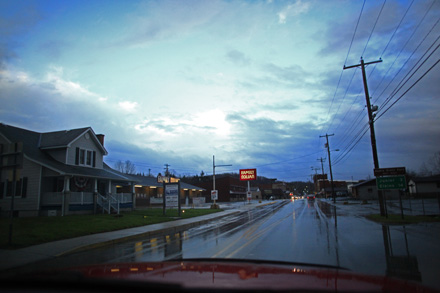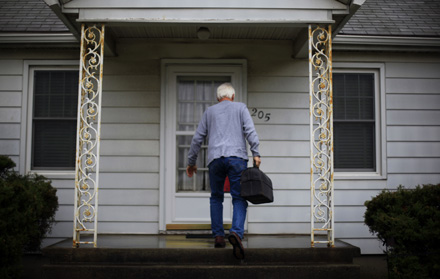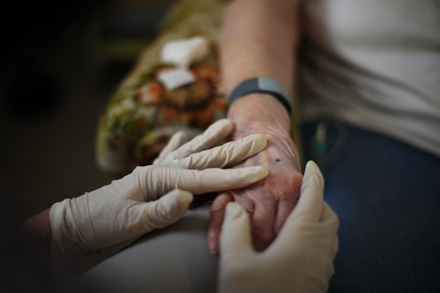In photography’s equivalent of the after-life, “no one can hear you scream.”
At least let’s hope that’s the case because, if not, W. Eugene Smith — the 20th century’s master of the photo story — would be creating a deafening noise. Why? He’d undoubtedly be lamenting having missed the arrival of the Web and its almost unlimited storytelling possibilities.
Imagine his seminal work — “Nurse Midwife Delivering Baby,” “Pittsburgh,” “Minamata” — all with a narrative audio backend. This would not be storytelling squared; but storytelling raised to infinity and beyond.
But, alas, Smith is gone and some of today’s modern photographers struggle in the master’s wake. Smith was the king of the cumulative effect of the photo essay — a variety of image types that add up to a greater whole. Today’s attempts too often rely on unconnected “moments” shot over and over again.
The tools that are now at our disposal make depth and breath of sound and image possible. While many photojournalists are learning audio storytelling or teaming up with those who do, however, still more have jumped straight to video. In doing so, they’re bypassing the need for careful image selection matched with a compelling narrative that’s told with care and emotion.
While working as the photo editor of The Washington Post, my boss — Assistant Managing Editor for Photography Joe Elbert — also identified this as a problem in need of a solution. Elbert, never one to do things the conventional way, used film to teach how images and sound can work well together. (Watching a Clint Eastwood gun fight unfold in a remote graveyard in “The Good, The Bad and the Ugly” can tell you a lot about photography.)
Elbert’s interest was not into creating more “garage Kubricks” — newly minted cinematographers making masterpieces on their laptops — but rather to help photographers learn to create a series of pictures that tell stories. When combined with audio, these stories would have a depth, grace and fluidity only made possible by our multiplatform world.
Photo essays are a great way of marrying photos with narrative, and so are audio slideshows. Below, I’ve listed five types of photos that make for strong photo stories. I’ve also included related examples from an NPR project about the impact of the stimulus bill on a rural health clinic.
Shot one: The scene setter
Where is your story taking place, and what does it look like? Is it a building, a town, an old southwestern graveyard? Place your audience in the action by taking a photo that shows it all.
Shot two: The medium shot
Let’s start to hone in on the spot of your action; the area of the building or town or graveyard where your subjects are. This shot narrows your story’s field of view and should bring you closer in.
Shot three: The portrait
If things go south and you can only come back with one photo, this should be it. Who is your main subject and what does he or she look like? This can be a traditional head and shoulders shot or a wider shot that shows the person’s surroundings.
It’s always best to take a variety of portrait shots, as photos of your subject will probably be used more than once in a good audio/visual presentation. Also, if your subject is a thing and not a person, capture it. A great series of electron microscope portraits might be just what you need.
Shot four: Capturing detail
This is the shot that is often forgotten. Detail shots work especially well for transitions, but can have great storytelling potential all their own. What are the pictures on someone’s desk? What books are they reading? What’s that post card they have tacked to the wall? All of these things tell us a little bit about our subject and are great elements to have in a photo essay or multimedia presentation.
Shot five: Capturing action
Action shots show your subject doing something — ideally the thing you are reporting on. This is the shot some photographers spend an entire shoot trying to perfect, often amounting to the same shot being taken 30 times. Photos of your subject in action are essential in audio/visual pieces, but they are not the only pictures you need. If you get the other four shots and not this one, you’ll still have a solid photo essay.
I advise getting the others in the can and then working on this shot. That way, you have a strong foundation to support your story, and your action shots will be the icing on the cake.
Four or five pictures might be enough for a photo essay gallery. For audio slideshows or video, however, you’ll want multiple options for each of these photo types.
With any luck, and a bit of talent, you’ll end up with a photo essay that would do Smith proud.











